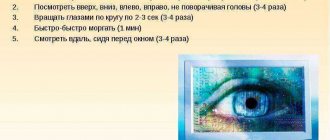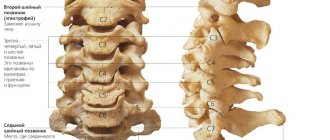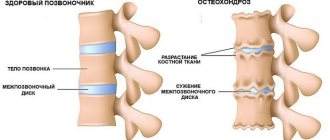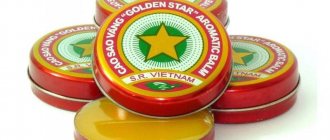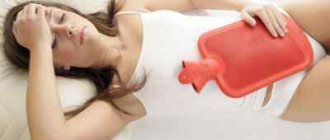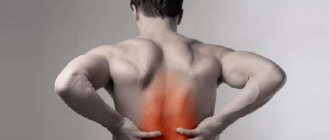Today, even people who work with their heads are increasingly having problems with their hands. What to do if your arm hurts from the elbow to the hand and what is the cause of such pain is one of the most popular questions asked to doctors of all specialties, from therapists to neurologists.
How the disease develops
| Disease | Manifestations |
| Osteochondrosis | Spinal disease affects the nerves running in the affected area, which causes pain similar to heart pain. They also respond in different parts of the body and can be accompanied by difficulty breathing and coughing. |
| Neurosis | Psychological stress, dizziness, nausea, and profuse sweating are added to the pain in the heart. |
| Lung diseases | Pleurisy, bronchitis, and pneumonia cause chest pain in the heart area, cough, breathing problems, and weakness. Their cause is the opening and contraction of the lungs, the movement of the ribs. |
| Spastic sensations are stimulated by eating and the position of the body after it. When the patient lies down, the syndrome becomes more pronounced. | |
| The attack leads to stabbing spasms in the heart, shortness of breath, panic and frequent exaggeration of the strength of sensations. |
But nevertheless, neuralgia causes pain in the heart area more often than other ailments. Because she herself has more reasons to appear. Among them are:
- infectious agents,
- hormonal imbalances
- endocrine pathologies,
- bad habits.
The hand is connected to the central nervous system by bundles of the median, radial and ulnar nerves. An inflammatory process that spreads to several bundles of nerve endings at once is called polyneuritis.
The disease leads to dysfunction of the extensor muscles. Further inflammation is accompanied by extinction of tendon reflexes. Depending on which nerve is inflamed, the function of the corresponding part of the hand suffers. Compression of the roots of peripheral nerves can be observed both at the exit from the spinal column and throughout the upper limb.
Prevention
Measures to prevent neuropathy include the following:
- First of all, you need to monitor your weight. The BMI (body mass index) of a healthy person should not exceed 25; if the index exceeds this mark, then obesity is already diagnosed. You should immediately bring your weight back to normal, otherwise excess body weight may be a potential cause of neuritis;
- An active lifestyle is also a guarantee of health. This also has a direct bearing on preventing infringement. This is especially true for people who have sedentary work at a computer;
- avoid drafts and sudden temperature changes, dress appropriately for the weather. Prevention of influenza and acute respiratory infections;
- the sleeping area must be equipped with an orthopedic mattress and pillows;
- avoid unilateral compression, for example, if you carry a bag on one side for a long time, this can also lead to pinching;
- timely seeking medical help.
The disease must always be prevented rather than treated later!
Prevention of a pinched nerve in the hand is timely treatment of injuries, fractures, and dislocations. If an infectious disease occurs, therapy must be taken with particular seriousness. A herpetic infection does not need to be treated on its own, as the virus can severely damage nerve endings.
If a person’s work involves stress on the hands, one must constantly do physical exercises to strengthen the ligaments and muscles.
Obese patients should try to lose weight. This will reduce the chance of joint damage.
It is important not to overcool and avoid injury. The right approach to nutrition, a healthy lifestyle, and vitamin therapy stimulate the strengthening of bones, joints, cartilage, and improve the condition of the nerves.
Measures to prevent hand injuries and neuropathy:
- avoid prolonged static position with a tense limb;
- monitor your weight and prevent obesity;
- Avoid exposure to drafts and hypothermia;
- engage in preventive physical therapy (especially important for people who spend long periods of time sitting at a computer);
- follow the principles of rational nutrition, take multivitamins, eliminate alcohol and preservatives;
- follow safety rules when working with heavy objects;
- avoid prolonged unilateral compression of the limb;
- do not overload your hands with long-term work with hand-held vibrating tools;
- seek medical help in a timely manner.
A pinched nerve takes a long time to heal and causes discomfort in the form of disability, pain and deterioration in quality of life. Strict adherence to the doctor’s instructions will speed up recovery and eliminate the negative consequences of the disease.
To prevent the appearance of neuritis, you need to try to avoid injuries and hypothermia, and promptly treat emerging infectious and chronic diseases. You should remember about the possibility of vaccinations, especially during the season of epidemics of viral infections. To maintain immunity, it is useful to use hardening, lead a healthy lifestyle, and play sports.
Proper balanced nutrition plays an important role in the prevention of neuritis. The diet must contain vitamins and microelements in full. The main thing is that the disease should not be neglected, because timely treatment is usually successful.
How to treat hand joints?
The treatment process is always a comprehensive program with an individual approach to each of our patients. Most of our methods, which are essentially drug-free, are acceptable even for the treatment of infants, pregnant and nursing mothers.
We have at our disposal the following methods:
All methods are recognized by official medicine, and doctors using them have appropriate certificates. The decision on the need to use certain medications during the course of treatment is made by the doctor, based on the complexity and severity of the disease, concomitant diseases, as well as the diagnosis.
Gymnastics
Gymnastics or physical therapy is an integral part of the recovery process after neuritis.
Gentle exercises. The affected limb needs to make passive movements, and the symmetrical joint of the healthy limb (the other hand) needs to be active. If muscles are weakened, perform light exercises. To reduce the load, the limb can be supported by weight with a garter or strap. It is good to do some exercises in warm water.
Physical therapy for brachial neuritis includes, in particular, the following exercises:
- Take a standing or sitting position. At the same time, raise your shoulders up, trying to reach your earlobes, then lower them down again. Do it once. You can perform it alternately with the sore and healthy shoulder, noting the difference in amplitude and tracking the pain sensations.
- From a sitting or standing position (keep your back straight), try to bring your shoulder blades together, and then return your shoulders to a free position. You can repeat it again.
- The arm hangs freely along the body. Bend the affected arm at the elbow, raise the elbow to a horizontal position and straighten the arm. Try to move your straightened arm back as far as possible, without turning your body. Then lower your hand and repeat all over again. The exercise is done with one hand 8-10 times.
- The arm is bent at the elbow and moved to the side. Brush on the shoulder. Make circular movements with your bent arm in one direction, stop for a couple of seconds, then in the other direction. Do 6-7 full rotations in each direction. If it is difficult to perform the exercise in a horizontal position, you can tilt your torso slightly towards the sore arm.
- Make vertical swings forward and backward with your sore hand, behind your head. The arm is straight, the swings are done carefully and slowly. 5-8 times is enough.
- With two straightened arms, swing in front of you crosswise, then move them to the sides and slightly back. Repeat a comfortable number of times, with good amplitude.
- Starting position - straightened arm in front of you. Turn your hand and forearm with your palm either towards you or away from you. Repeat once. In general, it is useful to perform various movements with your fingers (especially the thumb and forefinger) and in the wrist joint.
Physical therapy exercises are performed several times a day. You can also massage your sore shoulder yourself. When the hand has recovered enough to be able to carry out grasping movements, you need to include exercises with objects (ball, gymnastic stick, expanders).
Symptomatic treatment
Treatment is almost always comprehensive: taking vitamins and medications, ointments for external use, physiotherapy and special exercises. In some cases, a diet is indicated; in the worst cases, surgery is indicated.
Carefully! Long-term use of steroids leads to complications, so competent doctors for joint diseases try not to prescribe them for a long course.
You should not use medications yourself without a doctor’s prescription - this may worsen the situation!
Traditional medicine is useful as an addition to medication and physiotherapeutic treatment.
The following remedies are used to treat pain in the joints of the hands:
- Bay leaf decoction. For preparation you will need about 30 leaves. They are poured with two glasses of boiling water and simmered over low heat for 5 minutes. Next, pour into a thermos and leave for 4 hours. The resulting decoction removes salt from the body and relieves pain. It is drunk in small sips every few hours, divided into 3 days. Repeat the course after 1-2 weeks.
- Compresses. For them you will need yellow clay. It is mixed with warm water, applied in a thick layer to the sore joints, wrapped in cling film, and on top with a woolen cloth (or gloves/mittens are put on). Keep for several hours or leave overnight. Clay relieves pain and nourishes the sore spot with beneficial microelements. The course of treatment is 1 week.
- Honey and lemon. 3 lemons are crushed with peel and poured boiling water. After cooling, add 3 tablespoons of honey and stir. Take 1-2 tablespoons daily for a month. Vitamin C, contained in lemons, and folic acid, which is part of honey, have a beneficial effect on joints and the entire body.
Characteristic symptoms of pinched radial nerve
A pinched nerve in the hand is a pathological condition in which the nerve fiber begins to poorly transmit impulses to the tissues of the hand. After damage to the nerve endings, the patient's limb below the lesion site becomes numb, pain occurs, and sensitivity decreases. In severe cases, motor function becomes impossible.
A pinched nerve in the hand is a common occupational disease in people whose work involves working at a computer or with hand tools.
The risk of injury to a limb is high among athletes, elderly people who use crutches, teenagers who love computer games, and newlyweds who sleep together in an awkward position. An inappropriate sudden movement can cause severe pain or stiffness. If you feel discomfort, pain, numbness, tingling or loss of movement in your hand, you should consult a doctor.
The ulnar nerve is indispensable in providing fine motor skills of the hand. Its fibers are responsible for sensitivity and finger movements. A pinched nerve in the elbow joint is dangerous due to partial disability, decreased quality of life due to pain, and the need for surgical intervention as the process progresses.
Radial nerve entrapment or compression-ischemic neuropathy is one of the most common diseases of the peripheral nervous system. This phenomenon has a number of characteristic symptoms and causes. In milder cases, with timely seeking medical help, the disease responds well to conservative treatment, while treatment of severe forms of the disease often requires surgical intervention.
The main symptoms of this disease, depending on the degree of its damage, are pain and limited mobility, accompanied by impaired sensitivity of individual parts of the upper extremities. Such pathologies are often accompanied by disturbances in the extension movements of the hands.
The easiest way to self-diagnose neuropathy is as follows: try putting your hands in a “prayer-offering” position, then spreading them apart without opening them at the point where your wrists touch. In this position, it will be problematic to retract the affected hand.
If the pinching is located in the armpit area, a violation of the extensor function of the arm is observed in the forearm. In this case, it is impossible to keep the hand in a horizontal position when you hold your hands in front of you. With such pathologies, the hand hangs down.
Since the radial nerve is responsible for movements of the wrist and elbow joints, the first, third and thumb, numbness and pain are often observed in these parts of the hand. Sometimes patients complain of severe burning pain in the big toe, radiating to the upper limbs, for example, to the shoulder.
During pregnancy
This is due to the fact that the expectant mother:
- moves less;
- there is more load on the spine;
- could suffer viral and infectious diseases;
- tolerates freezing and frequent stressful situations.
But the root cause is usually an incorrectly selected bandage. The shoulder joint is compressed by a tight strap and blood circulation is impaired. Next, the inflammatory process develops, which causes neuralgia.
The difficulty of treatment is that during pregnancy and lactation most drugs cannot be used for pain relief and treatment. In such cases, gentle therapy is prescribed, in which drugs for external use are used.
Neuralgia can occur in people of any age group. Pregnant and young mothers most often face the problem of facial nerve neuralgia, but they are also sometimes overcome by brachial neuralgia. The following problems may be the causes (not counting possible injuries):
- Hypothermia or temperature changes;
- Infectious or viral diseases;
- Load on the spine and shift of the center of gravity;
- Chronic osteochondrosis, aggravated by a decrease in motor activity;
- Presence of tumors.
During pregnancy, the most difficult thing is to eliminate pain, since not all medications can be used. Therefore, in this case, gentle therapy is carried out - anesthetics are prescribed mainly for external action.
in children and adults
Myositis
Myositis is inflammation in skeletal muscles caused by toxic, traumatic and infectious factors. The disease is characterized by severe pain, swelling and tissue atrophy. The pathological process can have an acute or chronic course, accompanied by the manifestation of the following symptoms:
- pain when moving the arm;
- muscle spasms;
- swelling and redness of tissues;
- skin hypersensitivity;
- local increase in temperature in the affected areas.
When the shoulder muscles get cold, abscesses can occur, which leads to the development of purulent myositis. In this case, treatment should begin immediately, due to the risk of destruction of the purulent capsule and spread of infection to surrounding tissues.
When several muscle groups are involved in the inflammatory process, polymyositis occurs, the development of which provokes an increase in pain and muscle weakness.
Treatment of myositis
Myositis therapy involves the use of warming, anti-inflammatory and antimicrobial drugs. To improve blood circulation in tissues, experts recommend doing therapeutic massage, which helps relax muscles and regenerate them. How should a cold shoulder be treated?
To eliminate inflammatory processes in skeletal muscles, the following can be used:
- "Aponil" is a non-steroidal antiphlogistic agent. Eliminates inflammation, swelling and abscesses in muscles;
- "Biopin" is an anti-inflammatory and antimicrobial drug that eliminates pathogenic bacteria in affected tissues;
- "Analgin-quinine" - relieves pain that occurs when muscles spasm.
The occurrence of pain in the shoulder may indicate the development of joint diseases, neuralgia or myositis. To determine the optimal course of treatment, you need to undergo appropriate diagnostics and determine the cause of the inflammation.
Causes of pinched nerve fibers
The brachial, radial, or ulnar nerve may be damaged. The localization of the lesion depends on the reasons:
- untreated injuries (knife and gunshot) or untimely identified fractures, dislocations;
- incorrectly performed surgical intervention;
- habitual joint dislocation;
- heavy load on joints when playing sports;
- excessive and prolonged tension in the muscular system of the arm;
- occupational injuries, bruises;
- carrying very heavy objects;
- “wedding night” syndrome (the partner lies on her partner’s arm for a long time);
- improper use of crutches;
- uncomfortable posture during sleep, sleeping at the table;
- compression by tumor formation;
- scars where the nerve passes;
- violation of injection technique.
Before starting treatment, the doctor must find the exact cause of the nerve compression. Analysis of symptoms, as well as anamnestic data, will help in diagnosis; additional examination methods are also needed.
Therapeutic measures for nerve compression in the hand
Treatment for pinched nerves includes drug therapy, physiotherapeutic techniques, physical therapy, massage, and the use of traditional medicine. Treatment is carried out almost the same regardless of the location of the lesion.
These medications not only reduce pain, but also relieve the inflammatory response. Antispasmodics (No-shpa, Papaverine) relieve muscle spasms. Muscle relaxants (Mydocalm) relax muscle tissue. Diuretic drugs (Furosemide, Lasix) help with tissue swelling.
Nerve fiber conductivity is restored with injections of B vitamins. Treatment lasts 10 days. The most commonly used vitamin is B12. After relief of acute symptoms, Cyanocobalamin, Thiamine in tablet form or vitamin complexes are prescribed. You can use the drug Milgamma. It is prescribed in tablets or injections.
List of the most effective drugs
How to cure a cold nerve? To quickly block inflamed nerve bundles and treat them, the following types of medications are used:
- "Sirdalud" is a muscle relaxant, the components of which act on skeletal muscles, promoting its relaxation;
- Finlepsin is an anticonvulsant drug that eliminates muscle spasms. Has anti-inflammatory and analgesic effects;
- Cymbalta is an antidepressant that is used in the treatment of peripheral neuropathy. Eliminates irritation and promotes normal sleep;
- "Sulindac" is a non-steroidal anti-inflammatory drug that accelerates the process of regeneration of nerve fibers;
- "Metypred" is a glucocordicosteroid hormone that promotes the synthesis of lipocortin, which reduces inflammation.

